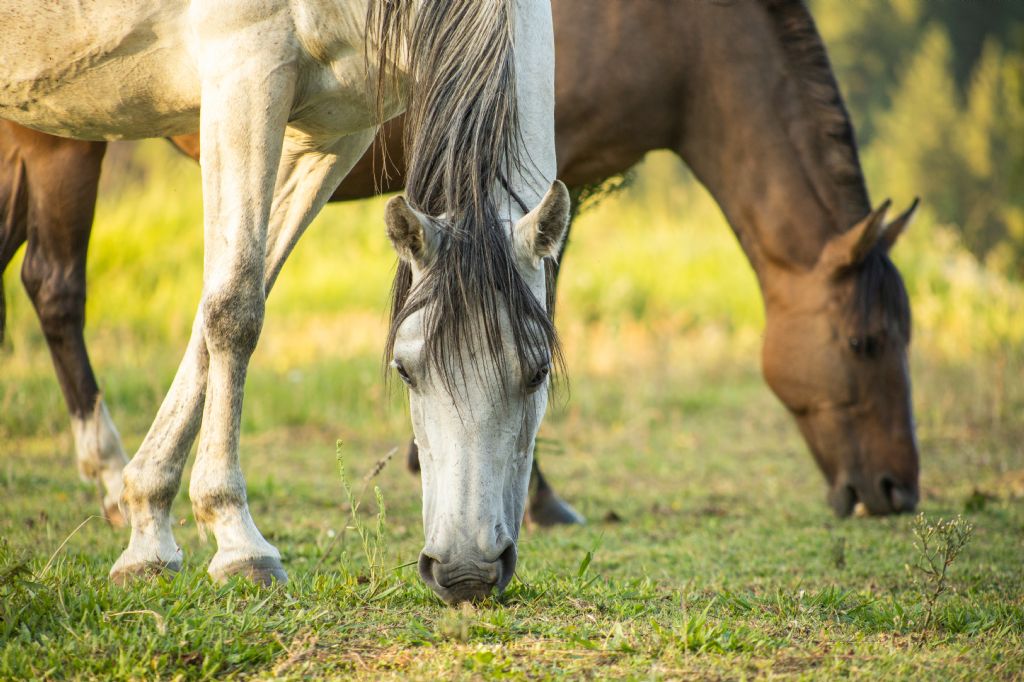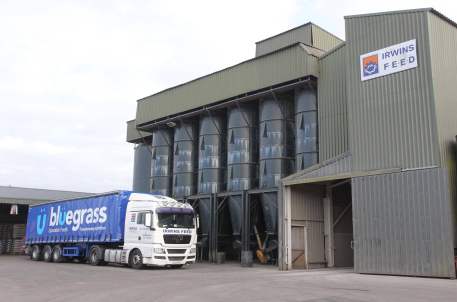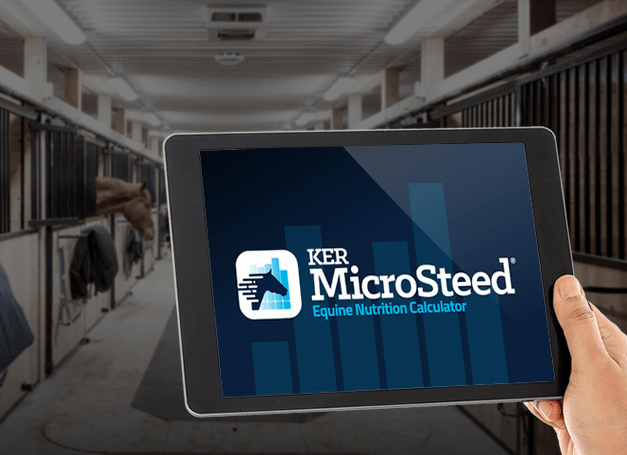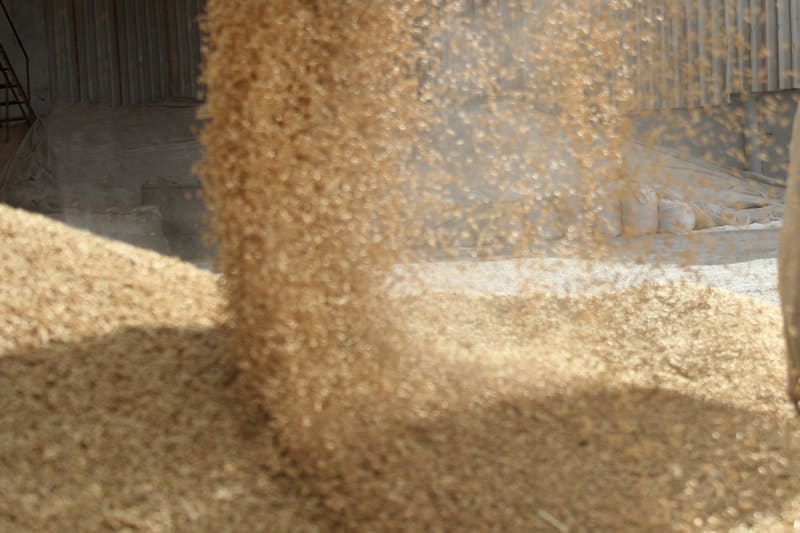Bluegrass News
Horses’ diets are based on a high fibre content, digested in the hindgut through microbial fermentation, known as hind gut fermenters. In order to digest these food sources and produce energy they require a stable microbial population. The supplementation of live yeast cultures have shown to be highly beneficial for gut health and are included throughout the Bluegrass Horse Feed performance and pro range products.
What are Live Yeast Cultures?
Live yeast cultures commonly used within commercial feeds or additional supplements are a mixture of yeast and the media it was grown on, dried to preserve the fermenting activity. Originally research began by ruminant nutritionist but has developed into equine showing that yeast can improve energy, protein and mineral digestibility.
- Energy- Supplemented yeast can stimulate the activity of the native intestinal microflora and increase their reproduction, this then leads to an increase in fibre digestion and energy produced.
- Protein – Improved protein digestibility from yeast supplementation is more relevant to young horses during growth and early training as certain amino acids are in greater demand.
- Minerals – Yeast supplementation improves the absorption of minerals, specifically beneficial for calcium and phosphorus in foals and lactating mares.
Getting the Balance Right
The gut is considered anaerobic, however there are traces of oxygen present which may enter with food or gaseous exchange through the gut wall and can be toxic to the microflora. The fibre digesting enzymes are most sensitive to oxygen and changes in pH;
- Below pH of 6 will affect them by slowing their functionality down
- Below pH of 5.8 they will start to die releasing a toxin that crosses the gut wall entering the bloodstream resulting in an inflammatory response causing laminitis.
Dietary Effects
Sudden changes to a horse’s diet can cause an imbalance of microbes in the hindgut which can result in health issues such as hindgut acidosis, colic or laminitis.
Starch
An overloaded diet of starch can result in undigested starch passing from the small intestine into the large intestine; caecum or colon. An accelerated fermentation process occurs resulting in an increased production of lactic acid and therefore decrease in hindgut pH, the result can be the development of hindgut acidosis and death of cellulolytic and hemicellulolytic bacteria. If this issue continues to persist it can lead to caecal and colonic ulcers, colic or laminitis. Live yeast culture supplementation has shown to have a “buffering” effect, lowering the production of lactic acid and stabling the pH level.
What's The Research Saying?
There are proven benefits of yeast supplementation for horses on low fibre and high starch diets, but recent studies have reported increased feed intake and nutrient digestibility in horses fed a high fibre diet supplemented with yeast cultures, this could be a beneficial finding for “hard to keep” horses. (Salem, A.Z.M. et al)
Two studies completed by Kentucky Equine Research on thoroughbred and quarter horse geldings looked at the effect of yeast culture supplementation on nutrient digestibility;
1) The horses were fed fescue hay and a commercial sweet feed with the supplementation of 10g/day of yeast culture. The results showed an increase in digestion of dry matter, magnesium, potassium, phosphorus and ash.
2) The second study was similar however with the addition of dicalcium phosphate as sources of phosphorus, they found an estimated true phosphorus digestibility was increased from 19.6% to 24.1% after yeast culture supplementation.
In the case of laminitic prone horses, studies have found they can have an altered bacterial profile or dysfunctional microbiome which can lower the fermentation rate of hay but increase the digestion rate of starch. Supplementation of yeast may help to stable the microbiome and increase hay fermentation whilst decreasing starch digestion.
Benefits of Live Yeast Supplementation
Adding live yeast cultures for the horse’s diet has proven benefits for all age and status of horses;
- Young horses – It can improve steady daily weight gain, height and feed efficiency
- Older horses- As their digestive efficiency of the hindgut decreases, they are unable to derive the maximum energy from the forage, additional yeast aid fibre digestion and can help to increase their body condition.
- Horses with health issues – Poor appetite or intestinal tract damage can benefit from yeast cultures in assisting to rebuild the population of microflora, restoring the digestive tract back to an efficient state.
- Broodmares – During late gestation yeast cultures can help maintain a good condition score as well as improving milk production and foal growth.
Throughout the Bluegrass Horse Feed range, live yeast cultures have been specifically fortified to enhance the bioavailability of the nutrients and aid hind gut health for optimal performance, growth and recovery.
For more information on the Bluegrass Horse Feed product range click here or contact a nutritional advisor at info@bluegrasshorsefeed.com
*Kentucky Equine Research (2013). How Does Yeast Supplementation Affect Nutrient Digestibility? - Kentucky Equine Research. [online] Kentucky Equine Research. Available at: https://ker.com/equinews/yeast-supplementation-affect-nutrient-digestibility/
*Salem, A.Z.M., M.M.Y. Elghandour, A.E. Kholif, et al. The effect of feeding horses a high fiber diet with or without live yeast cultures supplementation on feed intake, nutrient digestion, blood chemistries, fecal coliform count and in vitro fecal fermentation. Journal of Equine Veterinary Science.
*Hale, C. 2012. The efficacy of live yeast in horses. All about the feed. https://www.allaboutfeed.net/Feed-Additives/Articles/2012/11/The-efficacy-of-live-yeast-in-horses-1108998W/
* Kentucky Equine Research. 2009. Yeast Culture: Value-Added Ingredient in Horse Feeds. https://ker.com/equinews/yeast-culture-value-added-ingredient-horse-feeds/?highlight=yeast












